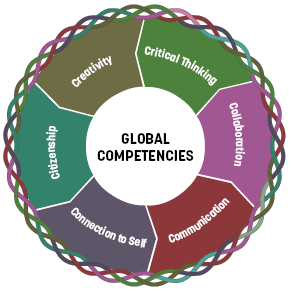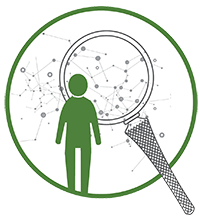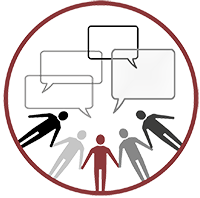The Kindergarten to Grade 12 mathematics curriculum in the English Program is designed to meet learners’ interests, skills, and needs so they can realize that mathematics is a way of building their understanding of the world and that it is part of their everyday lives.
The learning outcomes of this program of study are divided into four areas:
These areas reflect the nature of mathematics from Kindergarten to Grade 12.
The study of mathematics promotes the development of global competencies and supports learners’ cultivation of enduring understandings. It also fosters the development of logical thinking, problem-solving, and data analysis skills.
Learning experiences and evaluation in the mathematics classroom are based on a problem-based learning approach that allows learners to make connections between their conceptual understanding and various mathematical processes. Integrating these processes into learning helps learners to understand the nature of mathematics, and to make sense of it so they can learn and use mathematics in and out of school throughout their lives.


Critical thinking in mathematics involves the ability to compare, evaluate, critique, justify, test, and validate ideas, representations, plans, or solutions, using logical arguments, relevant criteria, and evidence. It also requires a metacognitive approach, enabling learners to solve mathematical problems and situations, communicate their reasoning effectively, and make informed and ethical decisions.
When critical thinking as a competency is applied in mathematics, learners

Creativity in mathematics involves the adoption of flexible thinking, curiosity, risk-taking and making connections to prior knowledge, enabling learners to formulate new hypotheses or view mathematical problems and situations from a new perspective in order to arrive at innovative solutions.
When creativity as a competency is applied in mathematics, learners

Citizenship in mathematics mathematics involves the development of mathematical literacy that enables the application of ideas and concepts in a variety of everyday contexts, awakening learners' curiosity about their role as citizens who can actively contribute to society, think critically about the world, make informed decisions, and propose solutions to issues from a variety of perspectives.
When citizenship as a competency is applied in mathematics, learners

Connection to self in mathematics encompasses the learners’ confidence in their ability to undertake and complete tasks, solve mathematical problems and situations, and engage positively in reflective practices that enable them to set goals and make progress.
When connection to self as a competency is applied in mathematics, learners

Collaboration in mathematics involves adopting a culture of exchanging ideas and perspectives, in which learners learn from and with each other in order to progress individually and collectively, develop their mathematical reasoning, and implement new ideas to solve problems.
When collaboration as a competency is applied in mathematics, learners

Communication in mathematics involves the learners’ ability to express their mathematical ideas, reasoning, and solutions in a variety of ways, including orally, in writing, concretely, graphically, and symbolically, and in various contexts. It enables learners to clarify and validate their ideas and reasoning, while encouraging them to question their attitudes and beliefs about mathematics.
When communication as a competency is applied in mathematics, learners
Mathematics, a tool for growth
Developing knowledge and skills in mathematics allows for the understanding of processes, theorems, concepts, situations, and their applications. Building mathematical knowledge allows learners to identify as citizens who believe in their ability to complete a task, a lesson, or a challenge successfully—motivating them to take action and persevere throughout their lifetime to achieve their goals.
Mathematics, a tool for seeing things differently
Mathematics is a part of the living world. It develops one’s capacity to think fluidly and creatively, and to understand, interpret, and logically represent various phenomena that can be imperceptible or abstract, to put these phenomena in perspective regarding one another, and to analyze them from a different point of view.
Mathematics, a vital tool for understanding the world
Mathematics contributes to the analysis, the comprehension, the interpretation, and the description of the world in which we live. It allows one to study quantities, orders, spaces, numbers, and figures, and the links that exist among them.
Mathematics, an essential interdisciplinary tool for advancing society
Mathematics plays an important role in people’s quest for innovation and solutions for the various problems encountered in advancing society. It is used in other disciplines to understand, describe, and interpret the phenomena that surround us, and it allows researchers to improve quality of life through innovation and the development of new technology.
Mathematics, an essential tool for all aspects of daily life
Mathematics is everywhere in society. Mathematical knowledge and skills are necessary for critically analyzing information in diverse social, personal, economic, political, cultural, and environmental contexts in order to make informed, ethical, and sustainable decisions in all aspects of daily life.